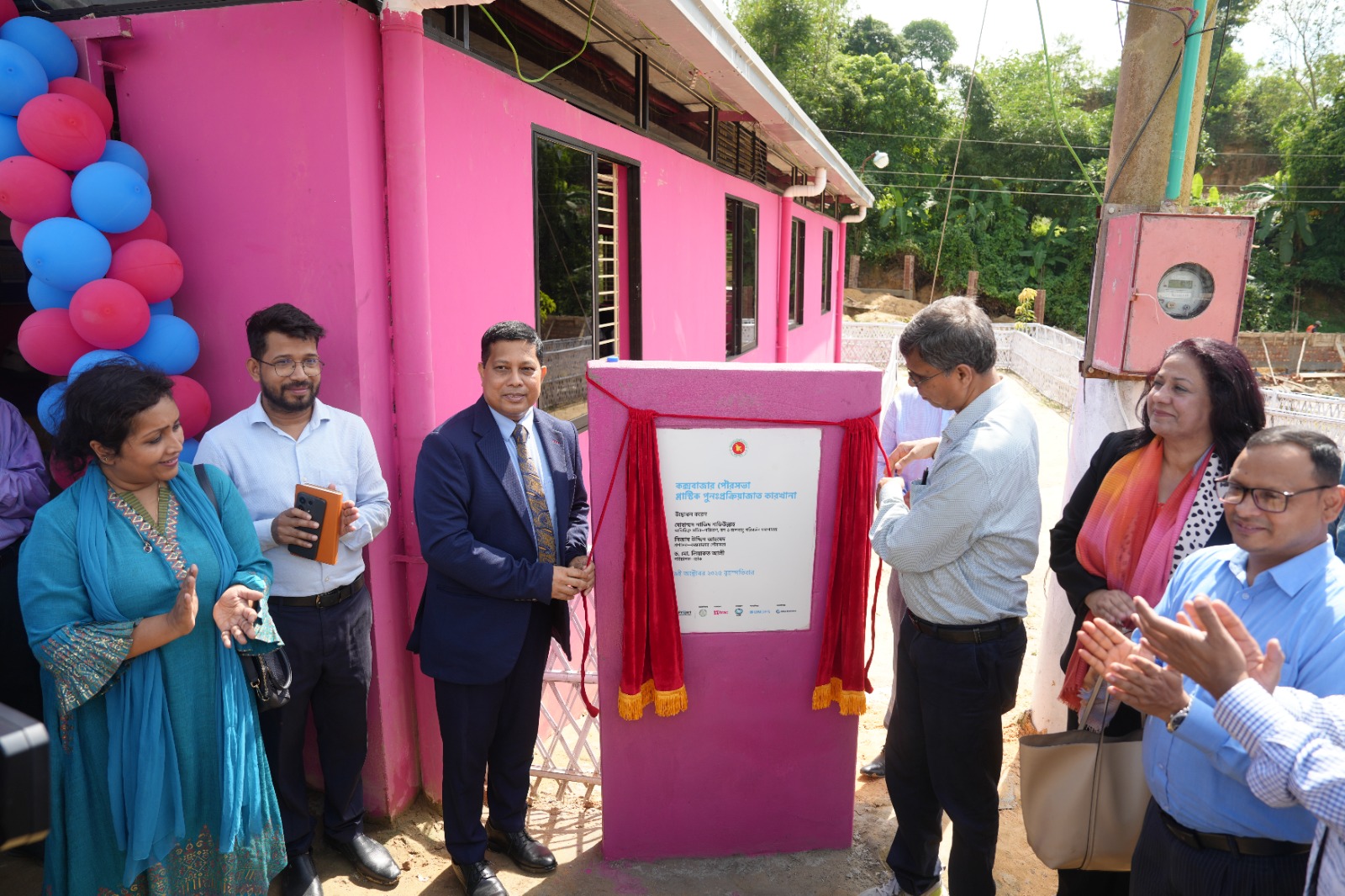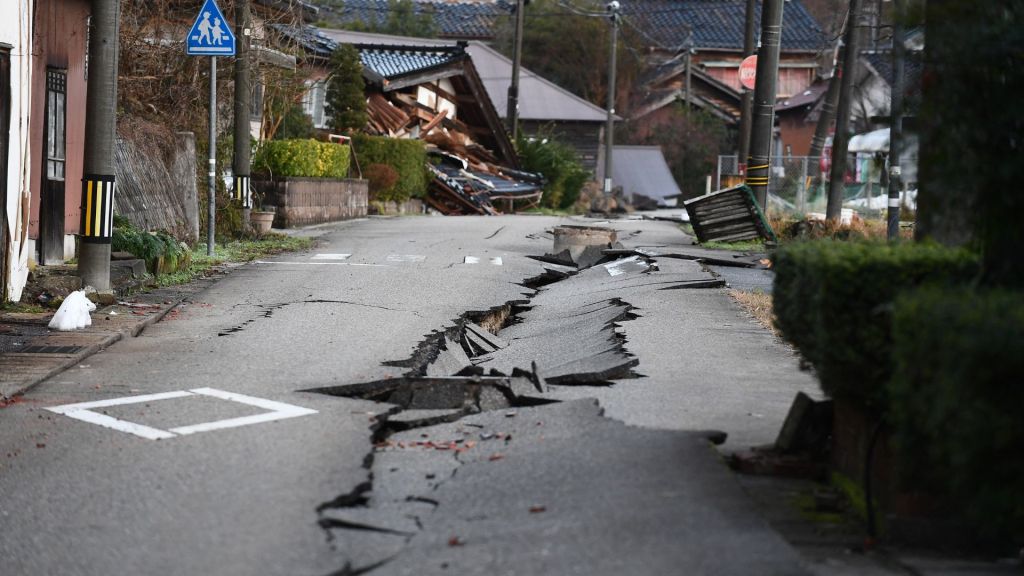The Journey Begins for Cox’s Bazar’s First Plastic Recycling Plant

Aiming to transform single-use plastic waste into reusable resources, Cox’s Bazar has inaugurated its first recycling factory. This eco-friendly initiative marks a new chapter in reducing plastic pollution, creating employment, and ensuring sustainable waste management.
Turning Plastic Waste into Resources
Located in the Mithachhari area of Ramu Upazila, this factory is considered a major milestone in sustainable waste management in Cox’s Bazar. The plant was inaugurated on October 9, 2025, by the State Minister for Environment, Forest, and Climate Change, Md. Shahab Uddin.
Participation from National and International Organizations
The inauguration ceremony was attended by World Bank environmental expert Bushra Bishad; UNOPS Bangladesh technical adviser Thomas Wari; Cox’s Bazar municipal administrator Sanzam Ullah; Executive Engineer of the Department of Public Health Engineering, Ibrahim Mazhar Pramanik; Assistant Director of the Department of Environment, Jesmin Akter; BRAC’s Climate Change Programme Director, Dr. Tamoha Shirin Ali; and HCMP Assistant Director Jaul Kader, among others.
Waste Surge Amid Tourism and Displacement Pressure
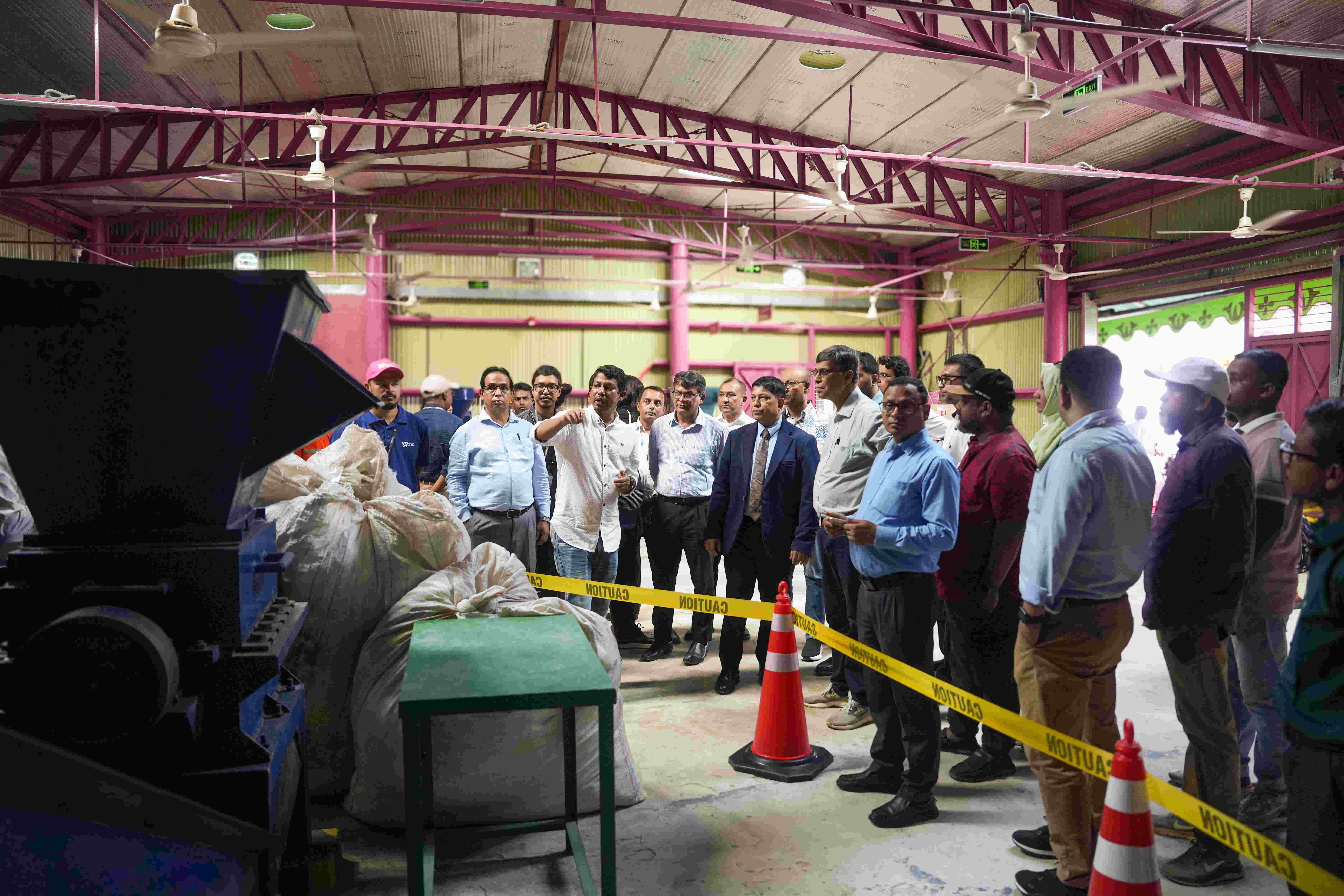
As a tourism-dependent city, Cox’s Bazar generates a huge amount of plastic waste daily due to its large local population and the influx of displaced Rohingya refugees. A recent study found that approximately 34 tons of plastic waste are generated daily in the district. Most of this waste consists of single-use plastics—such as polythene bags, bottles, and packaging materials—that are difficult to recycle and have little market value. The new recycling plant aims to turn such waste into durable, eco-friendly, and high-quality products.
A Model for Eco-Friendly Industrial Practice
At the inauguration, State Minister Md. Shahab Uddin said, “This initiative stands as a shining example of sustainable waste management. It will not only help protect the environment but also create employment opportunities for women and local communities.”
He expressed hope that this model would be replicated in other districts of Bangladesh in the future.
Local Employment and Economic Inclusion
UNOPS Technical Adviser Thomas Wari remarked, “This is a prime example of turning waste into wealth to address environmental challenges. UNOPS is working with Bangladesh to promote sustainable waste management and make the country free of plastic pollution.”
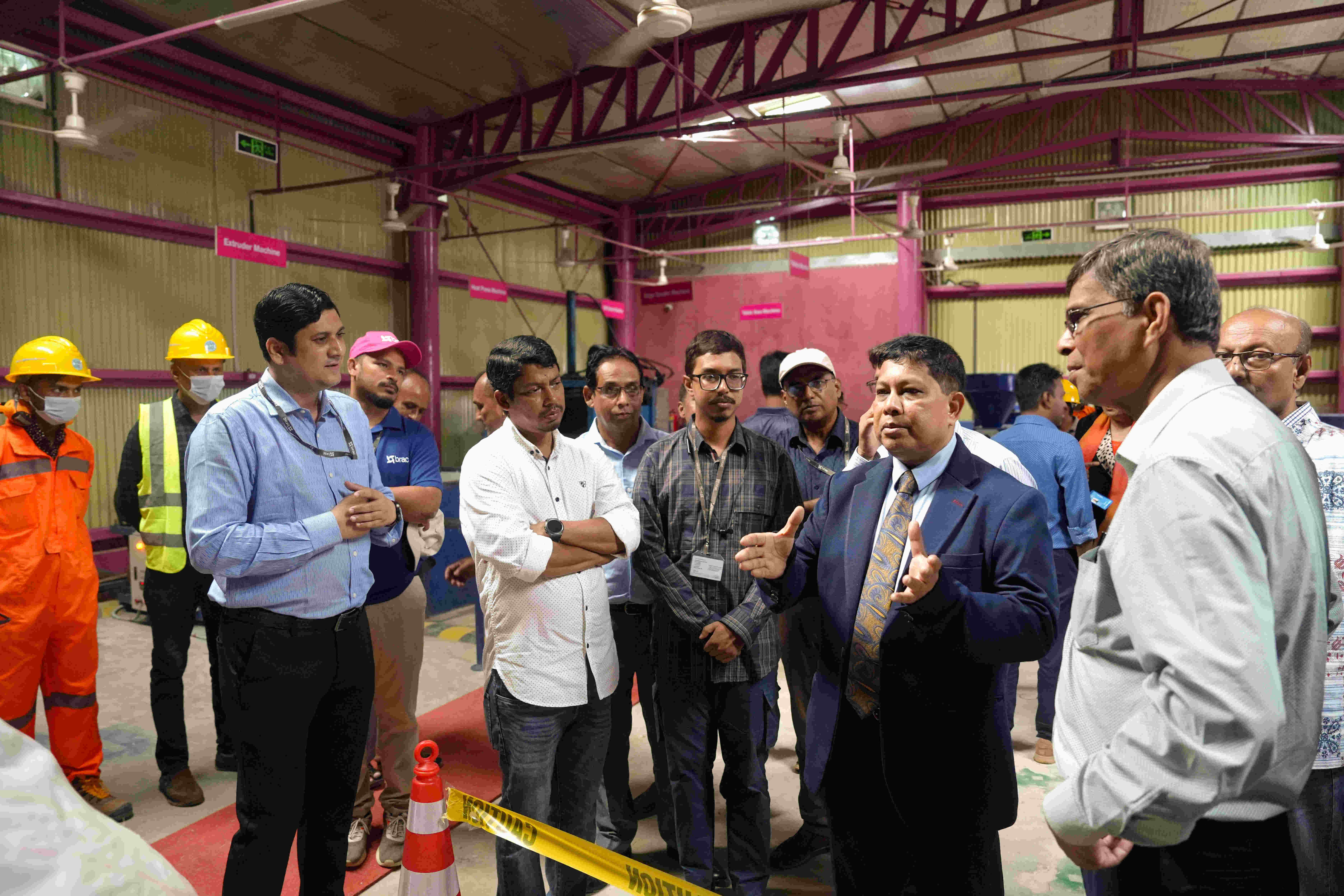
BRAC Director Dr. Tamoha Shirin Ali said that under the ‘PLEASE’ project, BRAC has long been working to reduce plastic pollution in Cox’s Bazar. With the cooperation of the municipality and local administration, the new factory will create direct employment for plastic collectors, traders, laborers, and producers.
Advanced Technology and Production Capacity
Executive Engineer Ibrahim Mazhar Pramanik from the Department of Public Health Engineering stated that additional facilities for solid and liquid waste management are being built adjacent to the plant. In the future, a model waste management center will be established here.
The factory, built under the ‘PLEASE’ project with the support of the World Bank and UNOPS and implemented by the South Asia Cooperative Environment Programme (SACEP), is operated locally by BRAC.
With a floor area of 5,280 square feet, the factory can process up to 200 kilograms of plastic waste per hour. It includes advanced facilities such as an eco-friendly plastic processing system (EPP), solar power generation, a water treatment unit, an elastic separation system, and 24-hour monitoring to ensure environmentally safe production.
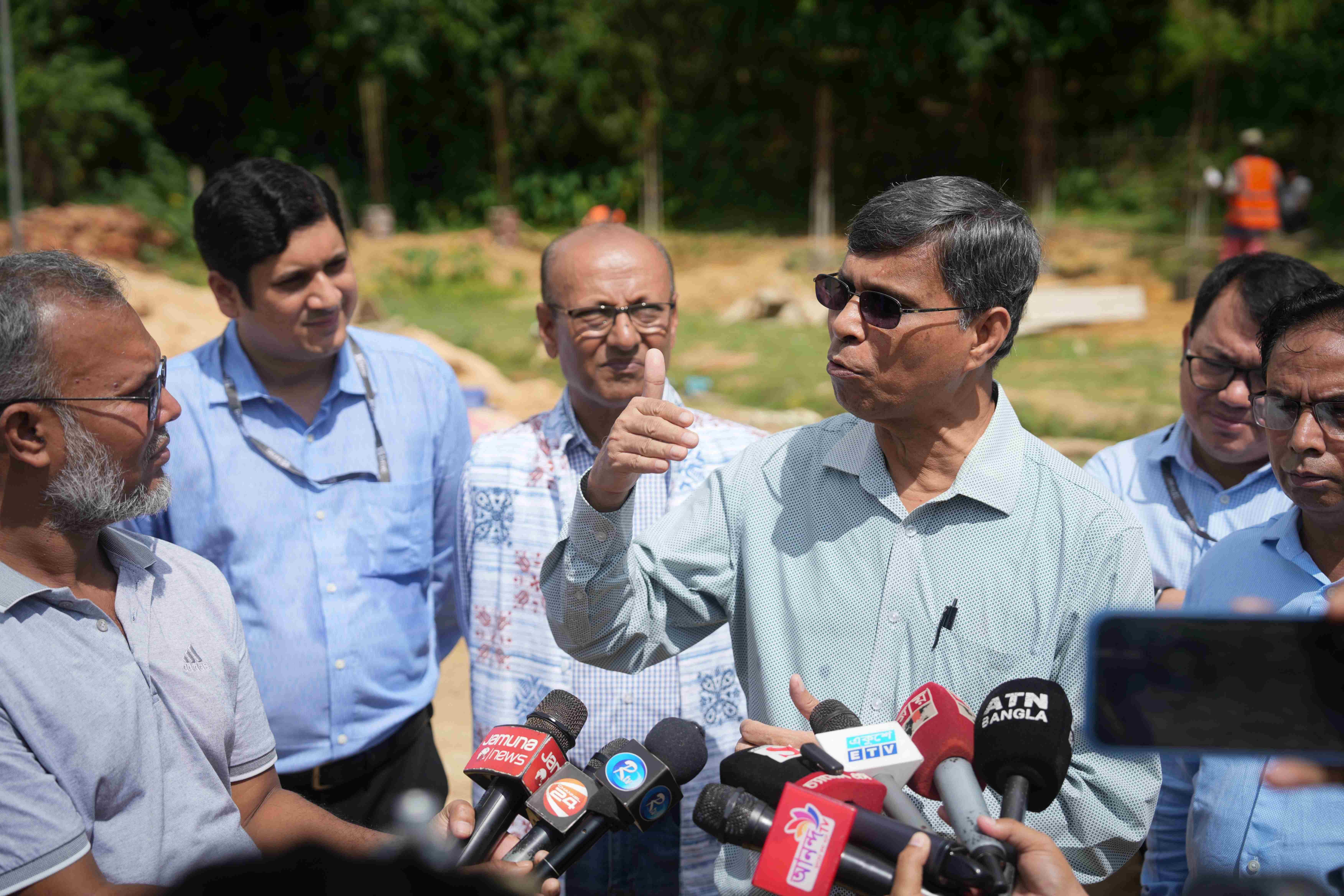
Women’s Participation and Coastal Protection
The plant is expected to encourage women’s employment and improve the livelihoods of plastic waste collectors. Additionally, the project will play a crucial role in reducing plastic pollution in canals, wetlands, and coastal areas.


